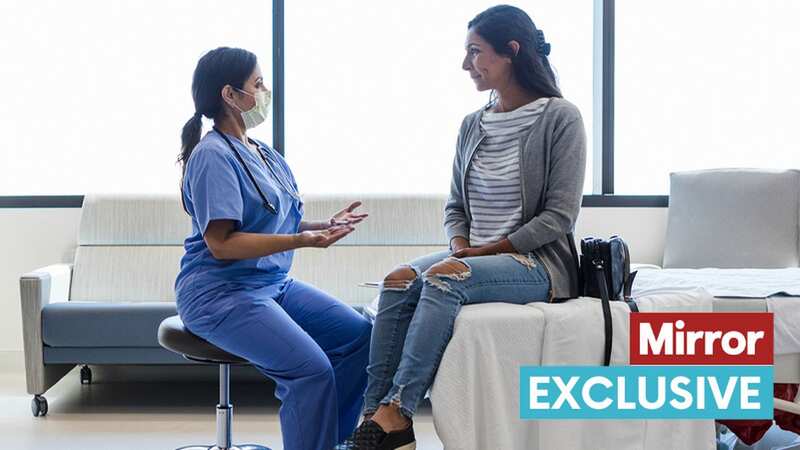Doctor warns never to try dangerous at-home IUD removal due to sepsis risk

Choosing a method of contraception is personal to each person, and when making your decision, you're provided with all the facts. If an IUD is chosen, you'll know the length of time it can be left in for, any potential side effects - and most importantly, when it comes to having it removed, you'll know it needs to be done by a professional.
With 'removing IUD at home' trending on platforms such as TikTok, many people who are not medically trained are sharing "guides" to removing it at home as often, they couldn't wait until their appointment with a doctor to have it removed. But NHS GP and TV doctor Dr Semiya Aziz has shared the reasons why this absolutely should not be done at home, under any circumstances.
She explained: "An Intrauterine Device (IUD) is a long-acting reversible birth control that is inserted and removed into the uterus by medical professionals and is a popular method of contraception. It a T-shaped device that has strings attached at the ends. The strings are visible at the entrance of the cervix and removal of the device by a healthcare professional is by gently tugging onto the strings to remove the complete device. IUDs are either copper-coated or release a hormone into the body's system.
"It is understandable that with the delay in GP appointments and encouragement on social media platforms that some individuals are tempted to remove their own IUD for their own personal reasons. However, the procedure of removal is not straightforward and self removal may incur significant risks and complications. All IUDs need to be removed safely in a healthcare setting by a trained professional. For doctors, removing an IUD, can be a fairly quick and simple procedure."
Dr Aziz said that during removal by a professional, the procedure is usually quick and easy, but "on very rare occasions they may be situations where the device becomes stuck. If the IUD does not slip out easily, it may be a more complicated process that requires the attention of a gynaecologist."
 A twitching eye can sometimes be serious - signs, symptoms and when to see a GP
A twitching eye can sometimes be serious - signs, symptoms and when to see a GP
She explained: "A self-removable attempt may also cause part of the IUD to break off, resulting in the partial removal of the device and a remnant being left in the uterus. The remnant, over time, can embed itself in the lining of the womb, or even perforate the lining, which will need urgent medical assessment and can cause intense pain. There is a possible small risk of infection or sepsis if the attempt was conducted in non-sterile conditions.
"Failure in the self-removal attempt can also cause the IUD to dislodge from its fixed original position in the uterus, causing constant abdominal and back pain accompanied by cramping, necessitating medical attention. Tugging onto the device's strings outside the cervix, with force, may result in significant complications. A layperson would not know how hard to pull, the precise angle to pull at, and how to handle complications like the IUD getting stuck or the uterus or cervix getting ripped by trying to pull too hard on the IUD string. If too heavy-handed it can cause breakage of the strings leaving the device stuck in the cervical canal which can result not only in excruciating pain but, an internal tear in the uterine wall or cervical canal causing significant bleeding, requiring urgent medical attention.
"Even in a healthcare setting, removal of an IUD can result in a vasovagal episode which is characterised by feeling lightheaded and faint, nausea, slowing of the pulse rate, and a fall in blood pressure. Most of these reactions are transient and resolve spontaneously but may need emergency resuscitation measures there and then. It has certainly happened to me on a few occasions when trying to remove an IUD, in a fully equipped healthcare setting. This episode can potentially occur during self-removal, leaving the individual in a dangerous compromising situation, which is why it is best to always see a healthcare professional for the removal of an IUD."
She also said it's important to consult with a doctor as some may "experience bleeding and discomfort", and in some cases, you can experience a "Mirena crash." Symptoms include "nausea, soreness of the breasts, or pain during sexual intercourse. It is therefore important to discuss the consequences of an IUD removal with a healthcare professional rather than to deal with it alone."
"Despite all the advice given out on social media and the temptation to remove your own IUD, it is essential to seek advice from a trained professional, who should be the one to remove your IUD, in an equipped healthcare setting, avoid any unnecessary complications or risks that you may later regret", she urged.
If you need to speak to someone about contraception, please contact your GP.
Read more similar news:
Comments:
comments powered by Disqus

































